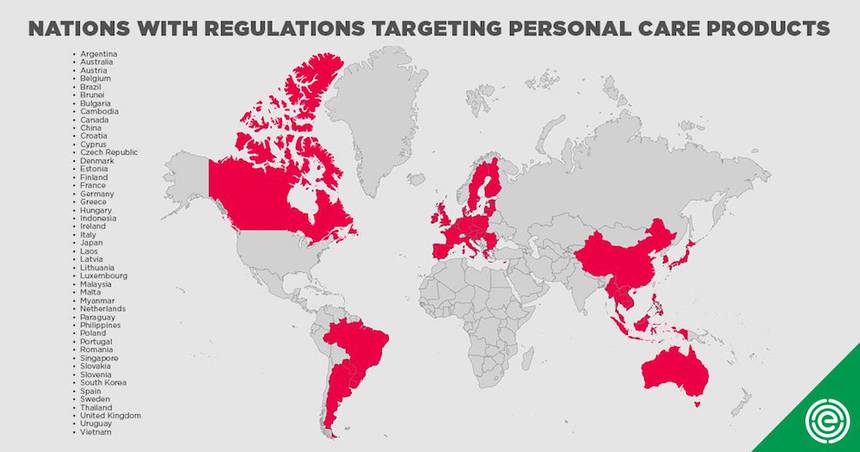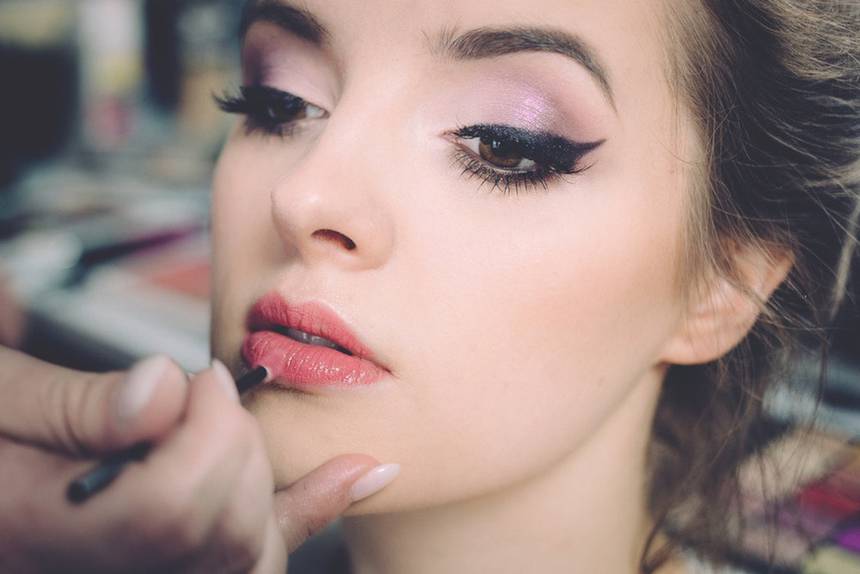The United States lags behind more than 40 nations in banning or restricting chemicals for safety reasons.
Federal cosmetic regulations have not been updated in the United States since 1938. Yes, you read that right. Congress has not revisited the guidelines they established for safe personal care products since the time of the Great Depression, 81 years ago. Just think how the industry and personal beauty habits have changed in that amount of time.
A Congressional hearing in 1988 called the cosmetics industry “a piecemeal patchwork system in dire need of repair” and emphasized the need for legislative reform, but nothing ever happened.
Fast forward to 2019 and the United States is falling behind more than 40 other nations when it comes to regulation of chemicals and contaminants in cosmetics. The following graph, created by the Environmental Working Group (EWG) as part of its latest analysis of cosmetics safety, reveals how poorly the U.S. ranks compared to the rest of the world.
 © EWG
© EWG
Some of the nations in this list have banned as many as 1,400 chemicals from personal care products. By comparison, the U.S. Food and Drug Administration (FDA) has banned or restricted only nine chemicals for safety reasons. The EWG lists a few of the chemicals considered unsafe globally, but allowed in the U.S. From the press release, these include:
– Formaldehyde. Regulators in some nations subject formaldehyde, a known carcinogen, and chemicals that release formaldehyde, to tight restrictions. But similar restrictions are not placed on… cosmetics and other personal care products sold in the U.S.
– Parabens. Parabens are regulated in Japan, the EU and the Southeast Asian nations, where officials have set maximum concentration standards. In the EU and Southeast Asian nations, some parabens that EWG found in U.S. products (isobutyl and isopropyl parabens) are not permitted in any cosmetic product.
– Triclosan. The FDA has banned the use of triclosan, which disrupts the hormone system, in antiseptic wash products like liquid hand soaps, but not in other consumer products. By contrast, more than 40 other nations restrict the amount of triclosan in consumer products.
In response to the growing number of complaints from consumers, some retailers and store brands are making independent efforts to provide safer products. Even certain states are stepping in with their own regulations, such as California’s introduction of Assembly Bill 495, which would ban 20 of the worst chemicals and contaminants in cosmetics. A senator in Connecticut has introduced legislation that would subject U.S. cosmetics to the same standards as Europe. This is well-intentioned, but as the New York Times points out, it’s not ideal.
“Such patchwork fixes can only lead to more confusion. Passage of a strong federal bill is the only way to reverse those trends. A good one would enable the FDA to commission independent reviews of cosmetic ingredients and recall tainted products, and would require cosmetics companies to register with the agency and report adverse events. Such measures are not too much to ask of an industry whose products are used by virtually everyone every day.”
I still think that state-based legislation is a valuable initial step that will signal to the FDA and the rest of the country that a regulatory overhaul is long overdue. But the FDA also needs a bigger budget; the NYT explains that its Office of Cosmetics and Colors “has an annual budget of just $8 million and 27 staff members,” which is absurdly small. This translates to minimal authority when it comes to enforcement.
The whole system is broken and it’s up to consumers to demand better. We can do this by making astute shopping decisions in the meantime, opting for products made in countries with tighter regulations than the U.S., for products with complete and detailed ingredient lists, and for those prioritizing natural and minimal ingredients. (See TreeHugger’s green beauty section for guidance on this.)
The EWG also asks people to sign a petition demanding cosmetic reform. You can find it here.
